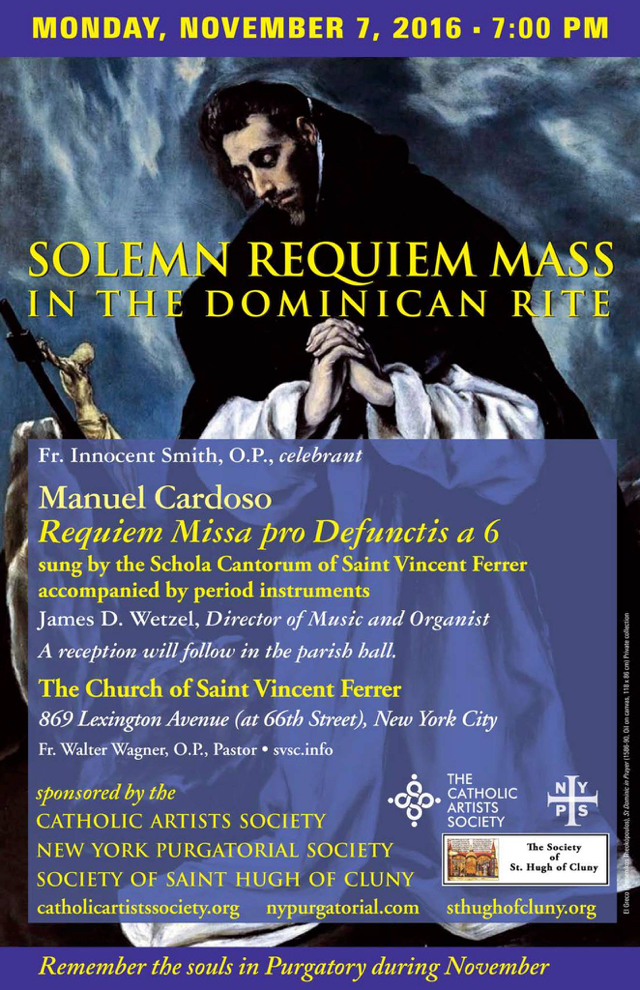For the Solemn Requiem Mass at St. Vincent Ferrer on November 7th, the Schola Cantorum of Saint Vincent Ferrer will be joined by a band of Renaissance wind instruments: shawms, sackbuts, and dulcians. These instruments are the ancestors of the modern oboe, trombone, and bassoon. While this type of accompaniment was a frequent practice in the sixteenth and seventeenth centuries, it is seldom experienced today in liturgical use and will lend special solemnity to this occasion.
Manuel Cardoso (1566–1650), a Renaissance composer from the golden age of Portuguese polyphony, spent most of his life as a Carmelite in residence at the Convent of Our Lady of Mount Carmel in Lisbon. He published extensively, often with through the beneficence of his friend King John IV, although much of his music was lost in the Lisbon earthquake of 1755.
Cardoso’s Missa pro defunctis a 6 is a masterwork of technical precision and emotive power, with many stylistic similarities with his two older contemporaries, Victoria and Palestrina. Much more so than in the Roman tradition, Iberian polyphony was often accompanied by instruments, and records from Cardoso’s own convent indicate that this was the case there.

Related Articles
2 users responded in this post